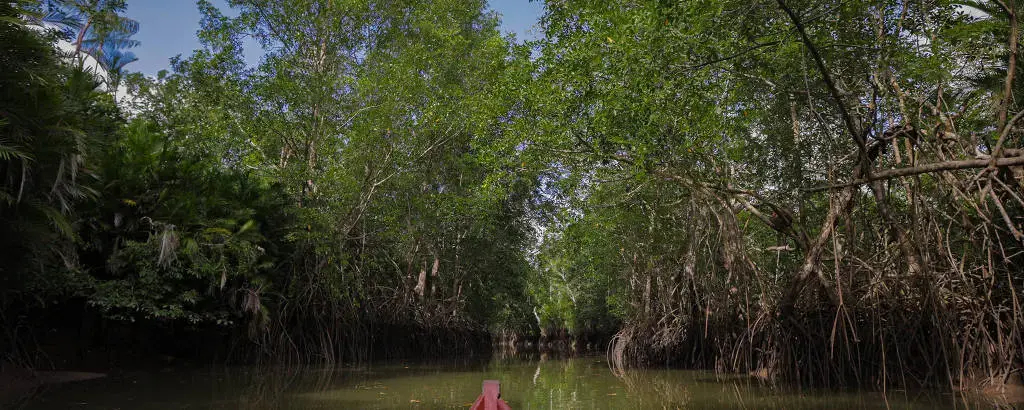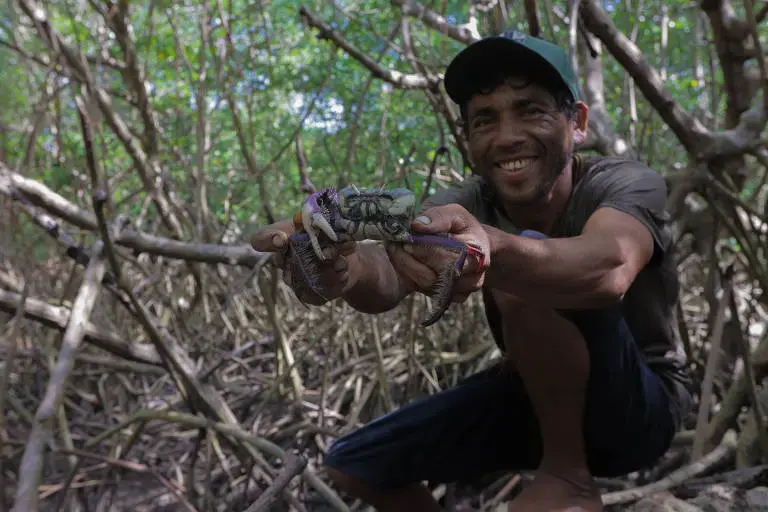Traditional Communities Take Action To Defend the Largest Mangrove Forest on the Planet
(Google translation from Portuguese, from El Fhoha, Brazil)

Image by Giovanna Stael.
Ecosystem in the Amazon, pressured by predatory fishing, is essential for the subsistence of the population on the north coast of Brazil
ILHA DE MARAJÓ (PA) and BRAGANÇA (PA) — Often in the news around the world for its imposing forest, the Amazon is a diverse biome, with several distinct ecosystems . Among them, mangroves are little known, but no less important for the environment : it is in the north of Brazil that the largest continuous strip of mangroves in the world is found .
In addition to being more extensive, the Amazon mangroves are also the best preserved. Less than 1% of the entire mangrove area in the region, which is around 7,800 km2 , has suffered devastation in recent years. The mangroves extend from Amapá to Maranhão, passing along the coast of Pará. And much of this conservation is due to the presence of traditional communities .

Rogério Matos Souza is a crab collector in the mangroves of Ajuruteua, a fishing village in the Bragança region, in Pará. Image by Giovanna Stael/Folhapress.
Mangroves are, by definition, estuarine areas where fresh water from rivers meets the sea. In general, the water is brackish, and the vegetation is predominantly composed of white or red mangrove species, capable of expelling excess salt through structures in their roots.
Several species of animals also live there, both invertebrates and vertebrates, such as birds, fish and crustaceans, such as the uçá crab.
Mangroves provide food and income for quilombolas , riverside dwellers, fishermen and indigenous people. Furthermore, mangroves are an important location for capturing carbon dioxide (CO 2 ), which helps combat global warming and reduce the climate crisis.
"The mangrove is our food. This is a forested area, and we feed because the mangrove is very close. We take our food, our medicines [medicinal plants]. In the mangrove, we take the crab, the sururu [a type of mussel], the turu [mollusk], and there is also shrimp, fish", says Roseti do Socorro Melo de Araújo, president of Arquia (AssociationQuilombola Remnant of America), in Bragança (PA).
According to her, everyone in the community knows how to work with crabs, fish and shellfish, including children. "The mangrove is very important for us. Today this crab is getting further away, more difficult to catch. They are filling in the mangrove, throwing garbage. Big companies come to take sticks from the mangrove to make scaffolding", he says.
More:
https://pulitzercenter-org.translate.goog/stories/traditional-communities-take-action-defend-largest-mangrove-forest-planet-portuguese?_x_tr_sl=auto&_x_tr_tl=en&_x_tr_hl=en-US

